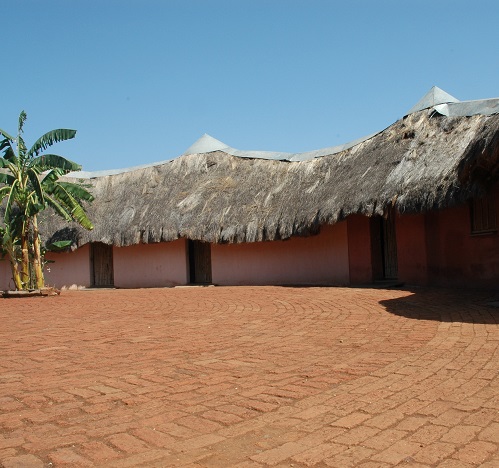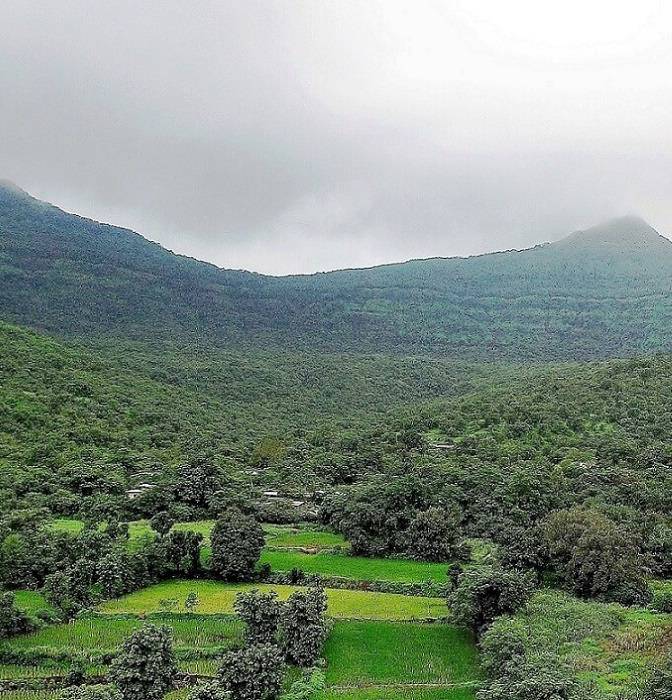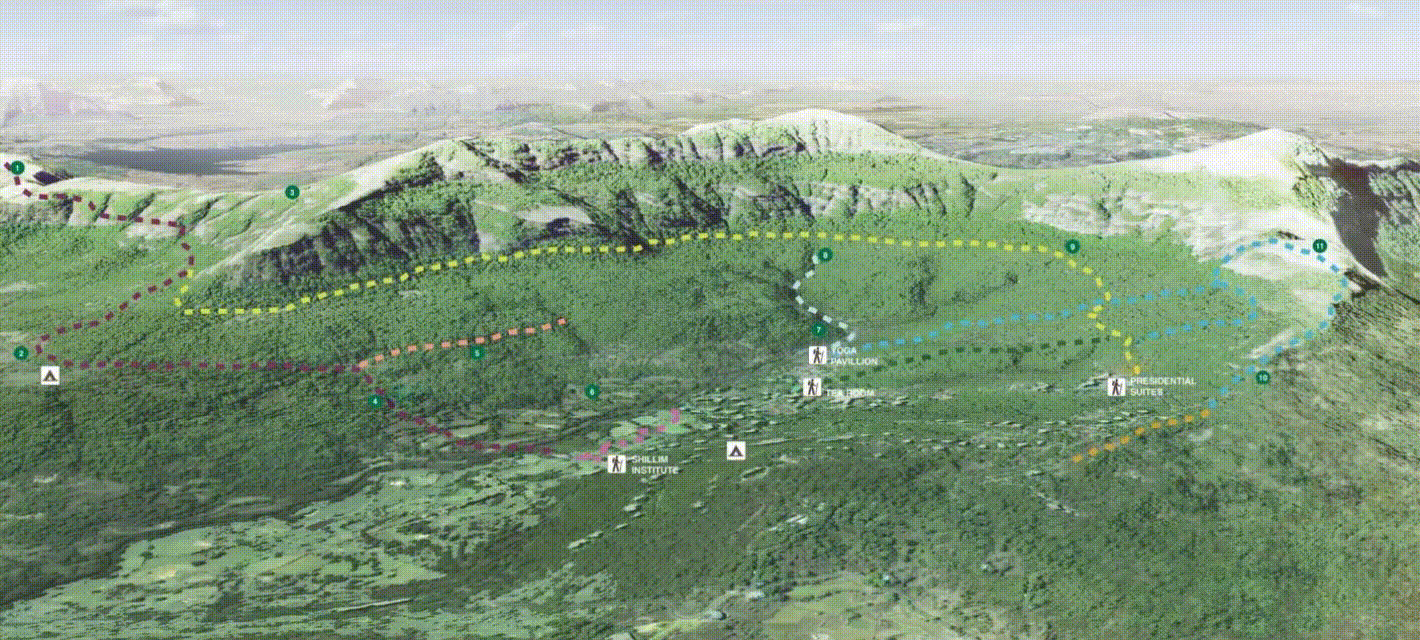About Shillim Institute
The Shillim Institute, a private, not-for-profit educational facility in the Western Ghats of India is dedicated to conservation, sustainable development and healing. It seeks to understand the relationship between human civilization and ecology and provides programs to translate that knowledge for use by academics, businesses and policy makers alike.
The Institute moves beyond the traditional, “environmental” view of sustainability and recognizes equally the roles of the arts, economics, culture, and faith in nurturing sustainable communities.
Located in the Western Ghats, The Shillim Institute safeguards approximately 2000 acres of land in the Northern region of this mountain range declared a UNESCO World Heritage Site and a biodiversity conservation hotspot.


THE ROAD TO SHILLIM - the Shillim story...
In 1985, two brothers William & Denzil acquired a family home in Khandala, a quiet forested hillside getaway located between Mumbai and Pune, very popular with residents of Mumbai. Spending long weekends away from the noisy bustle of Mumbai and even more so at the slightest hint of a wet spell during the monsoons, the getaway soon became a home away from home, a retreat from the heightened stress of everyday life.
Trekking in the adjoining forest and hilly areas, immersed in birdcall and monsoon waterfalls, picking wild fruit and listening to tales of wildlife – the Khandala getaway soon became a family favourite. The spectacular greenery, bird life, nearness to sky and stars, to descending clouds, at night a forest lit by a billion fireflies, the call from this hillside paradise slowly by slowly defined the brothers love for the wilderness.
Several years later they found themselves at the Shillim Valley – bowl shaped and ascending to the rangy mountain range of the Sahyadris, an eco-hotspot. Struck by love at their first sight, they made what was then an investment into a 500 acre land. On frequent journeys to the valley they discovered that the Adivasi folk who live in the forests, were extensively indulging in what is called as “slash and burn” agriculture. Born out of a sheer necessity to live off the land this form of farming involved slashing down the trees of the forest and scorching the earth in the simmering hot months of April and May when the forest with dried out grass was tinder dry, slightly ahead of the monsoons, the resultant ashes being the fertiliser required to harvest their monsoon crop. This being a one season crop, every year a new part of the forest was identified and the process repeated.
On the journey from Khandala to Shillim, then an uncomfortable two hour four wheel drive trip over broken roads and mud tracks that often washed away in torrential rainfall, they witnessed the annual burning of virtually every forested hillside. The realisation set in – the only way they could preserve the Shillim forests would be to buy and conserve it. By then roughly a third of the valley was already subjected to ‘scorched earth’ farming with the entire forested valley being at risk. The need to acquire and conserve turned critical. So began the journey of the brothers’ road to Shillim.
A team of people was quickly assembled, and they began the process of acquiring whatever land was affordable and available. Through many tortuous negotiations, and often suspected of profiteering entrepreneurs, the endeavour to ‘hold to conserve’ remained the central pursuit. It was simply unbelievable that the purpose of the acquisition was to conserve. It took 10 – 15 years before the brothers were successful in holding more than 2,000 acres of contiguous land in the Valley to achieve their goal.
Whilst the acquisition proceeded, attention soon turned towards restoring the forest. Radha Veach, who at the time managed the horticulture gardens of the Ganeshpuri Ashram, located on the outskirts of Mumbai quickly moved to live on site in a rugged thatched hut built for on-site work collaboration and to accommodate visitors. The thatched huts with a central communal fireplace were built by a British builder who specialised in earthen and bamboo sustainable homes as a test model of how sustainable buildings could work on site. Radha soon set up a nursery on the backwaters of Pawna lake, and went about a forest seed gathering and a planting program limited to native species of trees. The logic was simple. Native trees survive best and forests regenerate fastest when helped by its own species and thereafter left to heal itself. Radha’s program lasted several demanding hard years during which time the forest was allowed to regrow and decimated parts of the landscape were replanted with over 100,000 native trees and the trees watered manually until they could survive on their own. At the same time, the men folk of the village were employed to guard the property, put out forest fires, stop slash and burn and prevent wildlife hunting so the native species could reset a declining trend. Womenfolk were employed in the nursery and in the large annual early monsoon plantation program. Today Shillim conserves more than a million trees aside from many species of flora and fauna.

Once the reforestation program took hold, attention turned to thinking about the kind of project needed to ensure the long-term maintenance and preservation of the forest. Margie Ruddick, a landscape architect and master planner based in Philadelphia, USA and Steven Harris a design Architect based in New York soon visited Shillim. After intense discussions and camp nights, an area of 330 acres was identified for siting the Eco retreat. A team of Yale architecture students soon followed to study the site and suggest design ideas to the design team. Student projects get reviewed by senior architects in Yale to determine which designs related best to the project vision and site. Thus came forth the idea of the Shillim Institute, a platform dedicated to conservation and sustainable development.
The design work progressed through the following years through meetings all over the world and at Shillim where on cold winter nights team members would gather around the campfire late at night to resolve design and building challenges. From concept to design, from plans to permissions, from costs to funding, absence of any internal roads meant long hours hiking up and down the forested slopes. The Eco retreat would be built in nature without disturbing the natural beauty of this breathtakingly beautiful location. Each guest room would offer the guests a blend of a panoramic view and the thrilling experience of actually living in a forest. Finding the balance between flora, fauna and human habitation was critical as was the overall challenge to transform this pocket of paradise into an ecological, sustainable getaway, integrating man with nature.
Somewhere between the time of the project concept and design, William passed away with cancer. With this event, the family went through its most difficult period ever. Attention turned away from the project towards the more pressing needs of the business and family. Whilst the conservation program continued, the eco retreat was at a standstill. If it had to move forward it needed to renew its vision and purpose. Its purpose had to be cathartic to a family who’s mentor and most endearing one was taken away so suddenly. Many soul-searching months later energy focused on a shift – the project would be much more than just an eco-retreat. It would be one of the foremost wellness destinations in the world providing an exemplary sanctuary to the body, mind and soul. A wellness destination from where, after spending a few days or weeks a guest would return re-energized to their everyday lives. Wellness programs would combine with art studios, nature walks would combine with a cooking school, organic farming would complement deep meditation practices – to create experiences all in tune with the wilderness setting. Conserving the earth would resonate with conserving health. Shillim now had developed a purpose beyond conservation.
Today the Shillim Institute continues to conserve the Shillim Valley and has developed a more formal mission ‘to generate ideas and facilitate positive action in the areas of conservation, sustainability and healing’, beginning with the Shillim Valley and extending to other like-minded projects around the world. It remains the guardian and owner of the Shillim Valley.

